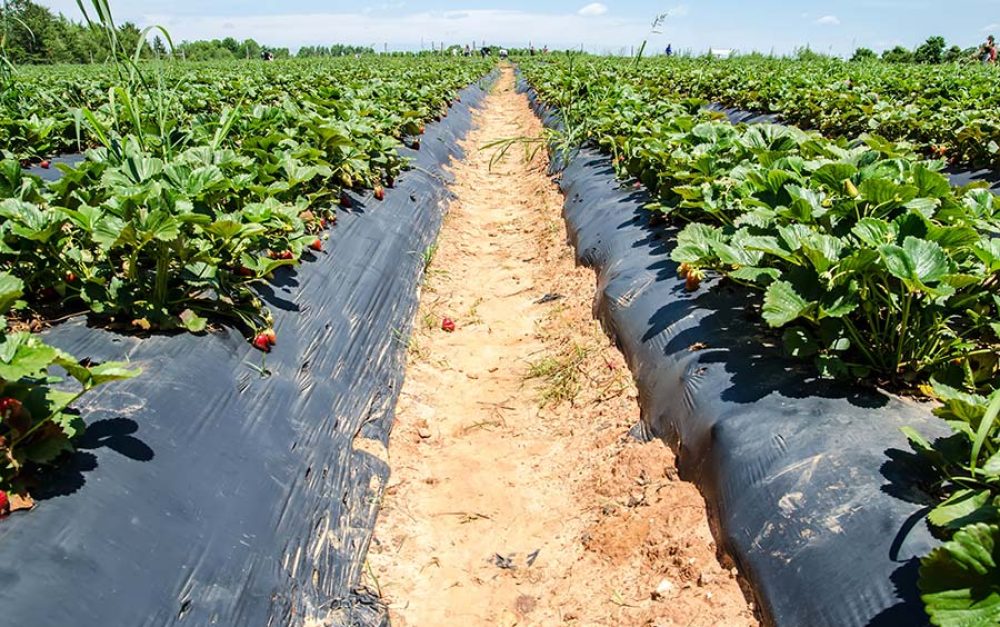Ignoring the science, California regulators just approved even more use of Dow’s fumigant pesticide, Telone.
Ignoring the science, California regulators just approved even more use of Dow’s fumigant pesticide, Telone. Already the second most widely used pesticide near schools in the state, cancer-causing Telone is applied primarily on strawberry fields and root vegetable crops.
Under new rules, growers can now apply 46,000 more pounds of Telone per “township” (a six-by-six-mile area) near schoolkids, farmworkers and rural families. As a gaseous fumigant, this pesticide can persist in the air for days at a time and — as noted by UCLA’s acclaimed toxicologist Dr. John Froines — is found to cause cancer not only in the liver, but in the adrenal glands, lungs and pancreas as well.
For these reasons, the California Department of Pesticide Regulation (DPR) suspended use of Telone in 1990 after concerning levels of the pesticide were found in air across the San Joaquin Valley. Over the following years, these same regulators developed a cozy relationship with Dow that resulted in lifting the suspension and an establishment of a new limit — or cap — on use in 1995. And now, more than twenty years later, DPR is allowing even greater use.
Dow Chemical Co. writes the rules
It’s not just that Dow convinced regulators to bring the chemical back to market. They also helped write the rules to allow a process of roll-over banking, by which unused amounts of Telone could be used in subsequent years — up to double that health-protective cap. The corporation then assisted regulators to establish a process of approving exceedances on top of that, allowing amounts as much as 2.5 times the levels thought to be safe. In a 2002 memo, DPR described the success of the program this way: “The framework will rely upon strict control by Dow of the sales and use of [Telone].”
The practice of allowed exeedences was stopped only when it was exposed by investigative journalists. All the while, who kept the balance sheets on use? You guessed it: Dow.
The new rules aren’t much different, as noted by Mark Weller, co-director of Californians for Pesticide Reform:
Once again, DPR has chosen to listen to Dow Chemical instead of agency scientists.”
As part of the process of evaluation, Dow conducted studies on the effects of their product and submitted that information to state officials. By design, these studies were conducted on concentrations of Telone below those in other studies — and looked at the impacts of shorter exposure periods than than non-industry studies. To no one’s surprise, Dow’s research found less risk of cancer linked to Telone exposure — which regulators then used as evidence to support increased use of the fumigant across California.
Sound familiar? It’s very similar to what played out when state officials approved another cancer-causing fumigant, methyl iodide, that the manufacturer pulled from the market under pressure.
Fumigant-free farming
Telone has a history of use not only in California, but also in the Pacific Northwest and Southeast. Some farmers have come to rely on the chemical in the wake of another fumigant, methyl bromide, being banned by international treaty. Academic institutions and state agencies have also been slow to support fumigant alternatives.
The good news is that other farmers across the state and country are leading the way, showing that strawberries and other crops can successfully be grown without the use of hazardous fumigants. Non-fumigant methods include everything from crop rotation to emerging technologies like anaerobic soil disinfestation. These practices can be implemented on fields near schools without any danger of exposing students, staff and teachers to health-harming pesticides.
In 2013, California officials released a plan to “foster early adoption of alternative practices, such as in regions with nearby sensitive sites like schools.” These agricultural innovation zones continue to be an important place for investment, supporting non-fumigant, prosperous farming across the state.
It’s time for officials to deliver on that plan.








